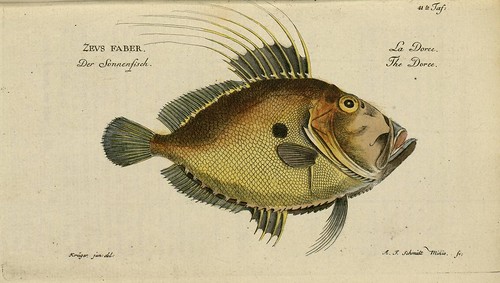


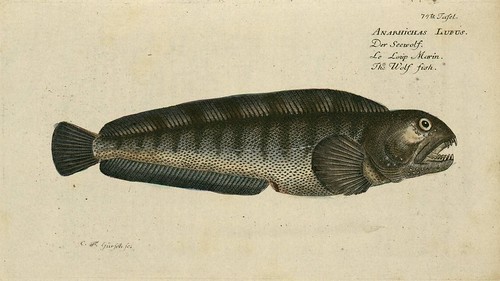
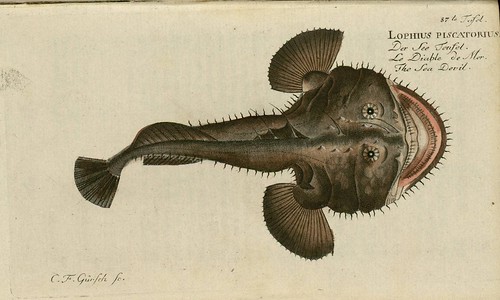

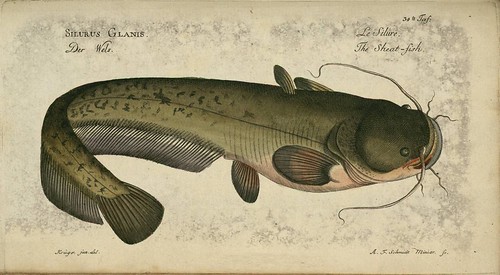

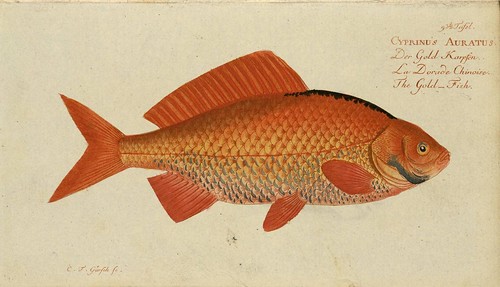
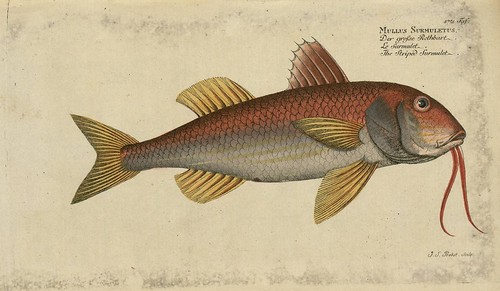

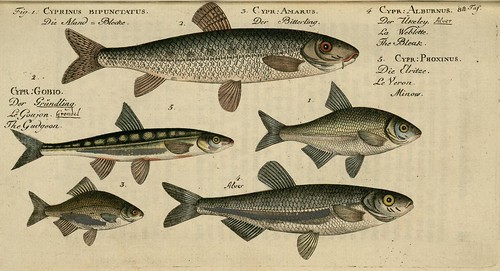
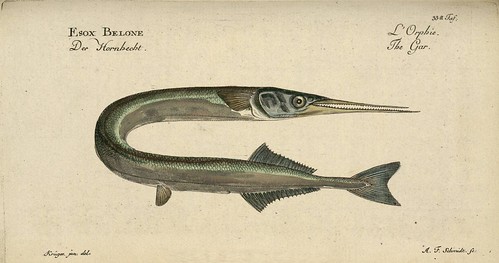

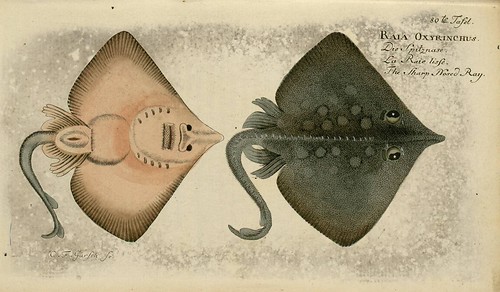

Marcus Elieser Bloch (1723-1799) was a German physician and ichthyologist, but academic prowess was anything but an inevitability in his life. He pulled himself up by his own bootstraps, as the saying goes, after an impoverished childhood left him illiterate into adulthood.
By some stroke of luck - or perhaps through artful persuasion - Bloch found a position as a teacher in a surgeon's home on the back of his scant knowledge of rabbinical texts. He made the most of the situation however, mastering German and Latin, and he began to study anatomy with the financial assistance of distant relatives. Eventually, Bloch completed a medical degree in Berlin where he subsequently worked as a physician.
Over a couple of decades, Bloch's interest in natural history increased and, in keeping with the custom of the times, he collected specimens and corresponded and shared specimens with international enthusiasts. Obviously fish was his main passion and he sent his son all over Europe collecting as many species as could be found. (The renowned collection still exists, housed at the Museum of Natural History at Humboldt University in Berlin)
Bloch was well into his fifties when his ichthyological hobby became his main academic focus. He concentrated on local fish in the beginning, publishing a couple of minor books on the subject. In about 1781-3 he began to release what would ultimately become the most important (and beautiful) study of fish published in the 18th century. It was one of the first wide-ranging ichthyology works that both provided detailed species descriptions and adhered to Linnaean principles. Although inaccuracies surfaced (particularly with non-German fish) and observations were eventually superseded, the series was generally serviceable and regarded as the standard for a century or more.
Bloch's 12-volume magnum opus -- 'Allgemeine Naturgeschichte der Fische' -- began with the 3-volume series known as 'Oeconomische Naturgeschichte der Fische Deutschlands' (the source for the images above; which specifically concentrated on German fish species). The overall series was released between 1781 and 1795 and was enormously popular. Investors helped defray the publication costs of the second half of the series by sponsoring individual illustration plates which bear their names.
The 432 hand-coloured engravings are fair attempts at reproducing the bright natural colouring of the fish and some of the illustrations were heightened with gold, silver or bronze filings to imitate the metallic sheen of scales. Bloch published a couple of other multi-volume series on fish (at least one posthumously), thereby cementing his place as one of the most important historical figures in ichthylogical science.
- The images above were sourced from 'Oeconomische Naturgeschichte der Fische Deutschlands', online at the fabulous, but sadly dormant these last couple of years, University of Strasbourg Digital Collection (the Strasbourg homepage{& new homepage} - the collection is mostly history of science and the majority of digitised works are illustrated; many appear in the BibliOdyssey archives).
- Universitätsbibliothek Heidelberg has about one quarter of the illustration plates from the overall 12-volume series, but I don't know which volumes they chose (click anything below 'Inhalt' and then 'Vorschau' for a large page of thumbnail images.
- The Internet Archive has a substantial collection of Bloch publications.
- This [PDF] illustrated overview paper from 2011 by Fiona Melhuish from Reading University provides the best background online, although it specifically deals with another of Bloch's publications : but Bloch's books appear with different titles, in varying languages, and were reassembled in larger series and the like, so there is much relevant overlap.
- Marcus Eliezer Bloch at the Jewish Encylopedia. [W]
- A number of Bloch book reprints are available from Amazon.
Tidak ada komentar:
Posting Komentar